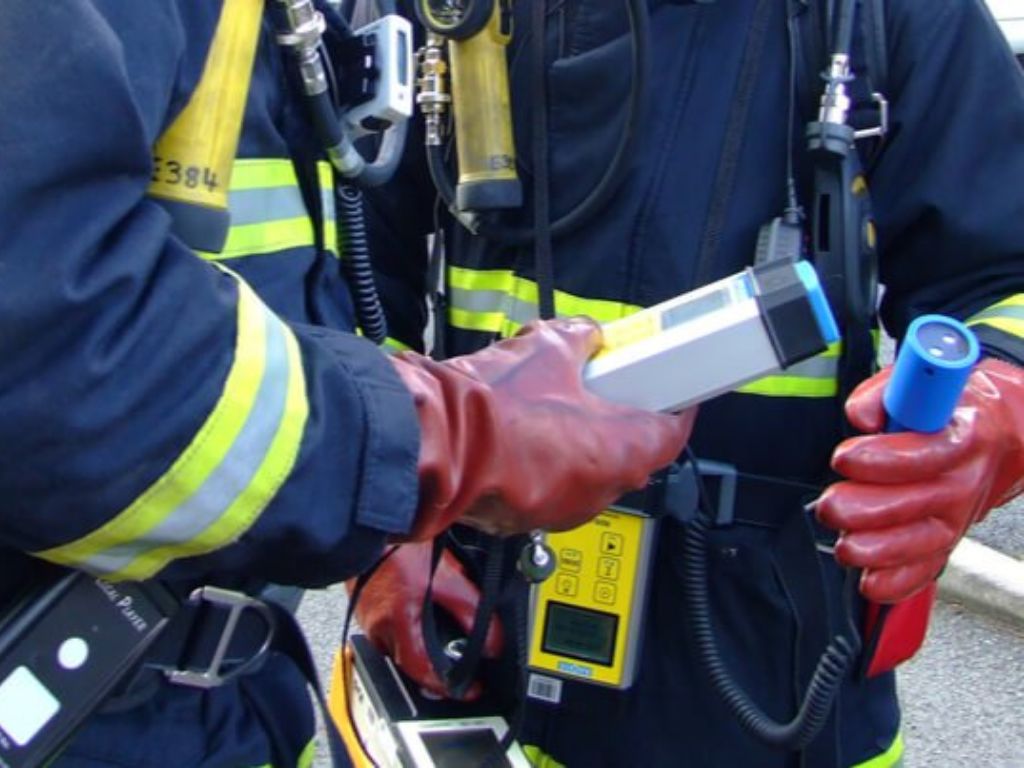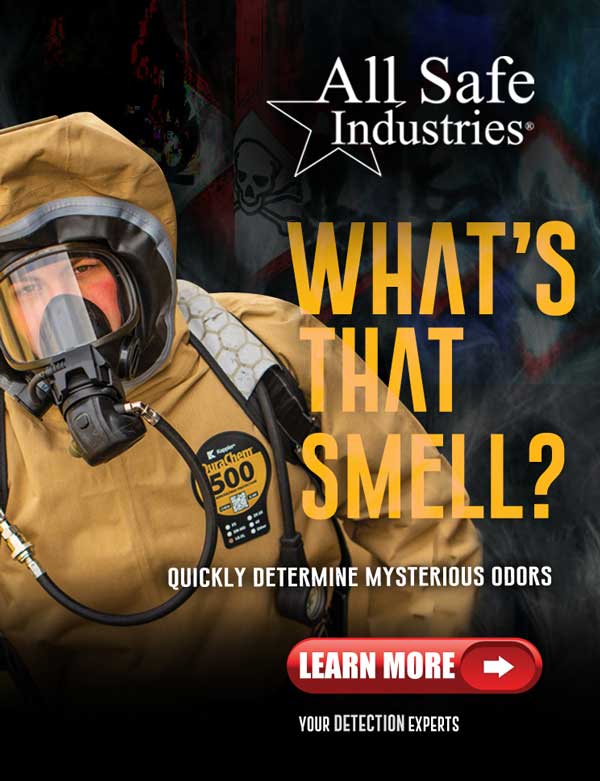Originally published on HazmatMag
Hazardous materials that are mishandled, incorrectly transported or used with malicious intent, can pose a substantial risk to human health and the environment.
How effectively hazardous materials (HazMat) incidents are managed and resolved hinges on the knowledge, training and skill of those charged with response.
In this article we examine the roles and responsibilities of the four HazMat response levels and we discuss how simulator detector technology can be used to enhance HazMat training outcomes.
Awareness Level
For responders working in awareness level roles, the chance of encountering the presence of a hazardous material in the course of their normal daily duties is relatively small.
In many cases though, it is awareness level personnel who will be “first on the scene” of a HazMat incident – and it is they who will be responsible for taking charge of the initial protective actions (isolating or evacuating the area, calling for specialist assistance etc) that will minimize the impact on people and the environment.
Among the expected competencies of an awareness level responder are:
- An understanding of what hazardous materials are and the situations and locations in which they are most likely to be present
- The ability to recognize markings, placards or labels that indicate the presence of hazardous materials
- Familiarity with the documentation / resources used to identify hazardous materials (such as the Emergency Response Guidebook (ERG) or its equivalent)
Operations Level
Responders working at the operations level play a hands-on and defensive role in initial HazMat response.
It is expected however that they will do as much as is possible to mitigate the incident without having to set foot inside the Hot Zone.
The mission-specific responsibilities of operations level responders include:
- Assisting in controlling, and minimizing the spread, of the HazMat release
- Knowledge of defensive HazMat techniques such as absorption, damming, diverting, vapour dispersion and suppression
- Experience in basic air monitoring
- Technical and mass decontamination
- Assisting with evacuation and victim rescue
- The establishing of hazard zones
- The preserving of evidence
Technician Level
Responders operating at technician level are highly specialized HazMat personnel who take an offensive-action role when responding to known or suspected releases of hazardous materials.
While HazMat technicians may not be expected to be experts in science, it is assumed that they will have a robust understanding of chemistry, biology and/or nuclear physics. Many also have a substantial CBRN training background.
A HazMat Technician’s primary responsibilities include:
- The performing of advanced risk-based hazard assessments in order to analyse the scope of HazMat incidents
- Experience in the selection and operation of advanced detection, monitoring and testing equipment
- The ability to select and use specialized Personal Protective Equipment (PPE)
- Selection of decontamination procedures and control equipment
Depending on their level of training and the scope of the incident, HazMat Technicians may also be required respond to specialized incidents involving flammable gases or flammable liquids and/or to have knowledge of radiological dosimetry and recording procedures.
Specialist Level
The Specialist responder is the highest level of responder for HazMat incidents, with an in-depth and highly advanced level of scientific knowledge.
In many cases they may be required to provide a more observational, trouble-shooting role – observing Technicians and watching out for potential complications. In other cases they may take a more hands-on approach, working alongside HazMat Technicians within the Hot Zone.
Specialist level responders may also be expected to work with the Incident Commander (IC) from within a command post.
Importance of Training
The real-world demands of a responder’s day-to-day role, together with the ongoing challenges of limited time and resources, means it is crucial that the HazMat training they receive is relevant to their work and tailored to their expected duties and tasks.
Equally too, it is important that they are provided with the opportunity to demonstrate their HazMat response skills and knowledge in both a classroom setting and in the context of a real-life environment.
The provision of realistic and engaging hands-on training can have a vital role to play in ensuring responders are equipped for the challenges of managing live HazMat incidents.
Integrating the use of simulator detector equipment into training scenarios can also be beneficial in enabling trainees to experience hands-on training that is rigorous, compelling and repeatable, but where there is no health and safety or environmental risk.
If you are interested to explore how the use of simulator detectors can enhance your HazMat training outcomes then please get in touch with one of our experts today.



